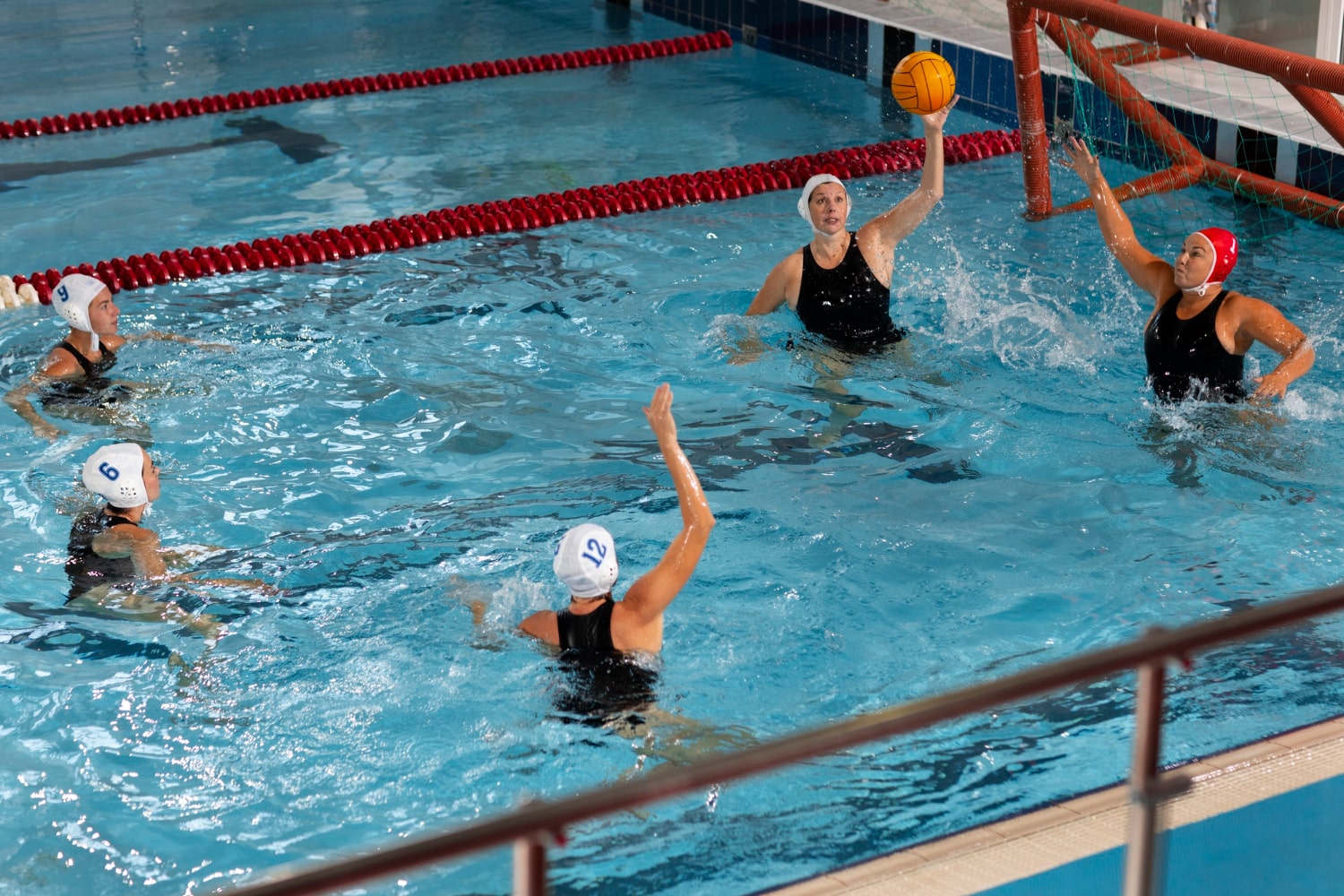Water polo is one of the most demanding and thrilling team sports in the world. Although it may not be as globally popular as football or basketball, it impresses with its fast pace, intense physicality, and tactical depth. Athletes in this sport need not only strength and stamina but also excellent coordination and the ability to cooperate with their teammates. The fact that the entire game takes place in the water gives it a truly unique character. Below are some fascinating and interesting facts about water polo that you might not know.
- Water polo originated in the 19th century in the United Kingdom as a kind of aquatic rugby. Early games were played in lakes and rivers with very basic rules. Over time, the rules evolved, and the sport moved to swimming pools. By the end of the century, the game had become more structured and recognizable in its modern form.
- It was one of the first team sports to be included in the Olympic Games, making its debut in Paris in 1900. At first, only men were allowed to participate, while women’s water polo became an official Olympic event only in the year 2000. Since its inclusion, water polo has remained a regular part of the Olympic program. This gives the sport a long-standing and prestigious international history.
- Players must swim throughout the entire match without ever touching the bottom of the pool. They use a technique known as the eggbeater, which involves rapid, alternating circular leg motions. This method allows them to stay afloat while keeping their upper body stable. It is both physically exhausting and technically demanding.
- A full match consists of four quarters, each lasting eight minutes, but due to stoppages and breaks, total playing time is significantly longer. Each team has six field players and one goalkeeper in the water at any given time. After every quarter, the teams switch sides of the pool. Substitutions can happen frequently and often take place while the game is still in progress.
- The sport is known for its intense physical contact, which is partially allowed within the rules. Players can block, push, or wrestle within certain limits, as long as they do not commit personal fouls. Much of the action happens underwater, where grabbing and holding can go unnoticed. Despite this, the game is still highly tactical and strategic.
- The water polo ball is specially designed with a textured surface that prevents slipping. There are slightly different ball sizes and weights for men’s and women’s competitions. The ball is brightly colored for better visibility during play. Its unique design helps players throw, catch, and pass even when wet.
- The goalkeeper has a distinct and crucial role compared to field players. They are allowed to use both hands to block shots and have limited rights to touch the bottom of the pool under certain conditions. Goalkeepers also initiate counterattacks with long passes and coordinate their team’s defensive positioning. Their role requires quick reflexes and excellent decision-making.
- Coaches play a vital role not only in developing tactics but also in managing player fatigue. Quick substitutions and clear communication are essential for maintaining energy and performance. Coaches must often use hand signals or timeouts to deliver instructions. Tactical planning can be just as important as physical training in this sport.
- Hungary has long been considered a water polo powerhouse, holding more Olympic medals in the sport than any other country. Their playing style is a combination of strength, discipline, and advanced teamwork. Hungarian athletes are highly respected and serve as role models for young water polo players worldwide. Their legacy has helped popularize the sport in Europe and beyond.
- Water polo is increasingly popular at youth and collegiate levels around the world. Many countries have specialized training centers and schools that introduce children to the sport from a young age. It builds character, discipline, and teamwork. Women’s participation continues to grow, bringing more visibility and recognition to the sport.
- A player can be excluded from the game for 20 seconds for committing a personal foul, creating a man-up situation for the opposing team. This period is critical and often leads to goal-scoring opportunities. The fouling player must leave the playing area and wait for a signal to return. Strategic use of these moments can turn the tide of a match.
- Team chemistry and communication are absolutely essential in water polo. Every move and pass must be coordinated to maintain control of the game. Training includes ball-handling drills, swimming technique, and video analysis of plays. Teams spend long hours practicing together to achieve harmony and efficiency.
- Mental strength and stress resistance are just as important as physical skills in this sport. Players operate under extreme pressure and must make quick decisions while exhausted. The ability to stay calm and focused can be the difference between winning and losing. Water polo tests not only the body but also the mind.
These incredible facts about water polo reveal just how complex and captivating this sport truly is. Far from being a niche activity, it combines endurance, tactics, and teamwork in a dynamic and exciting way. Under the surface of the water lies a world of intense competition and skill. If you did not know much about it before, now you have discovered just how remarkable water polo really is.





